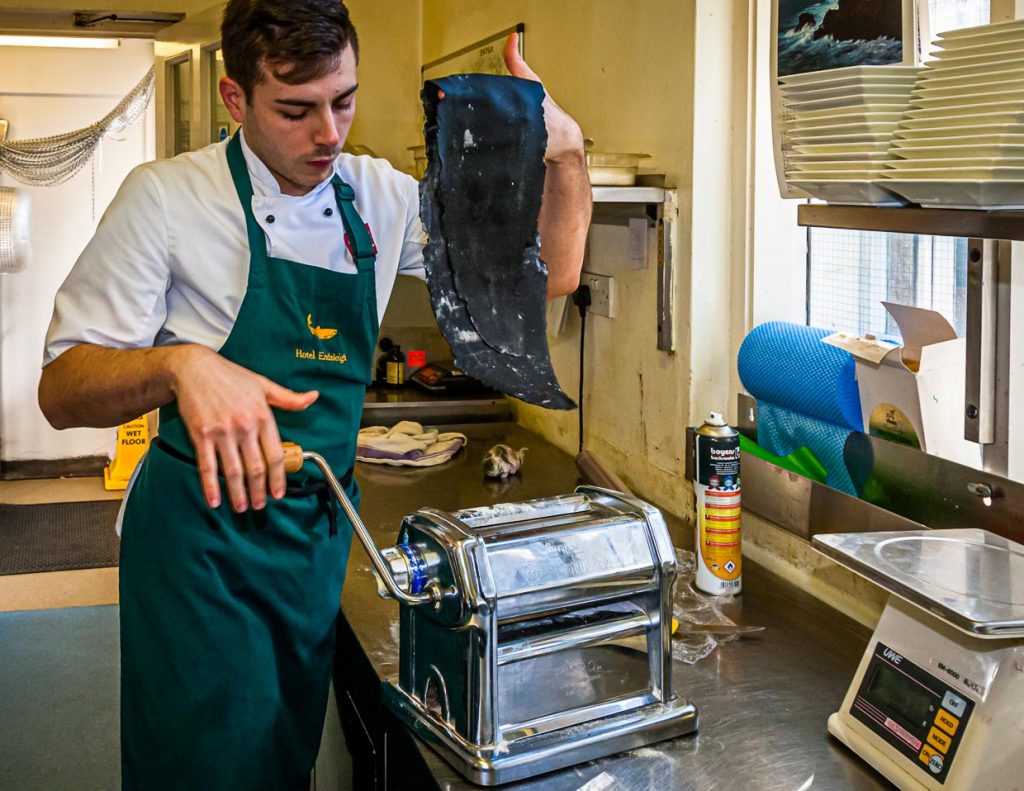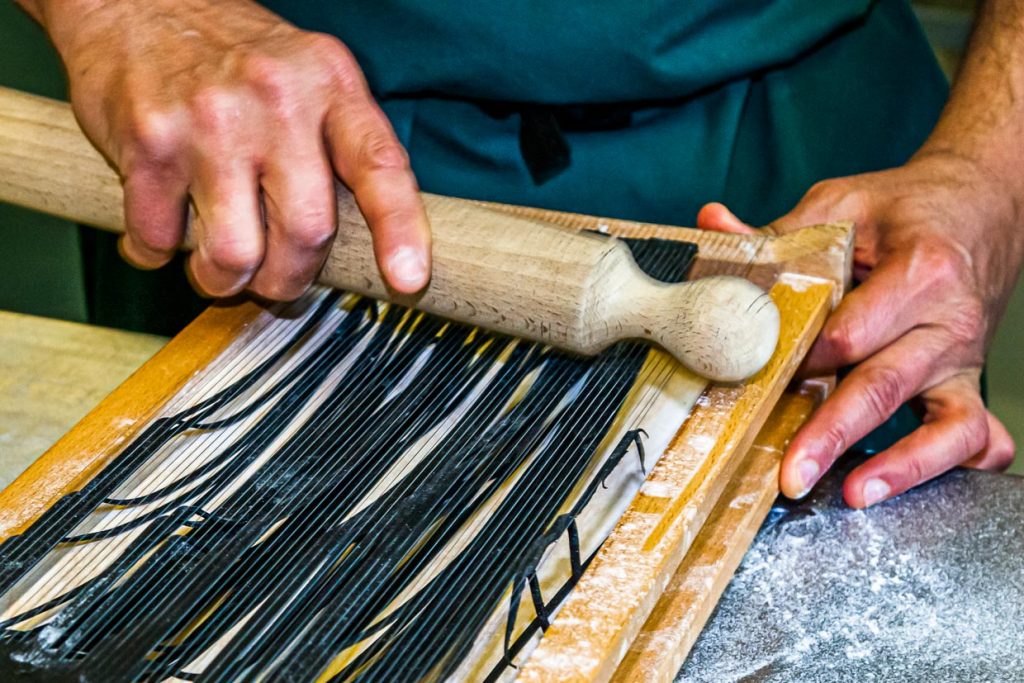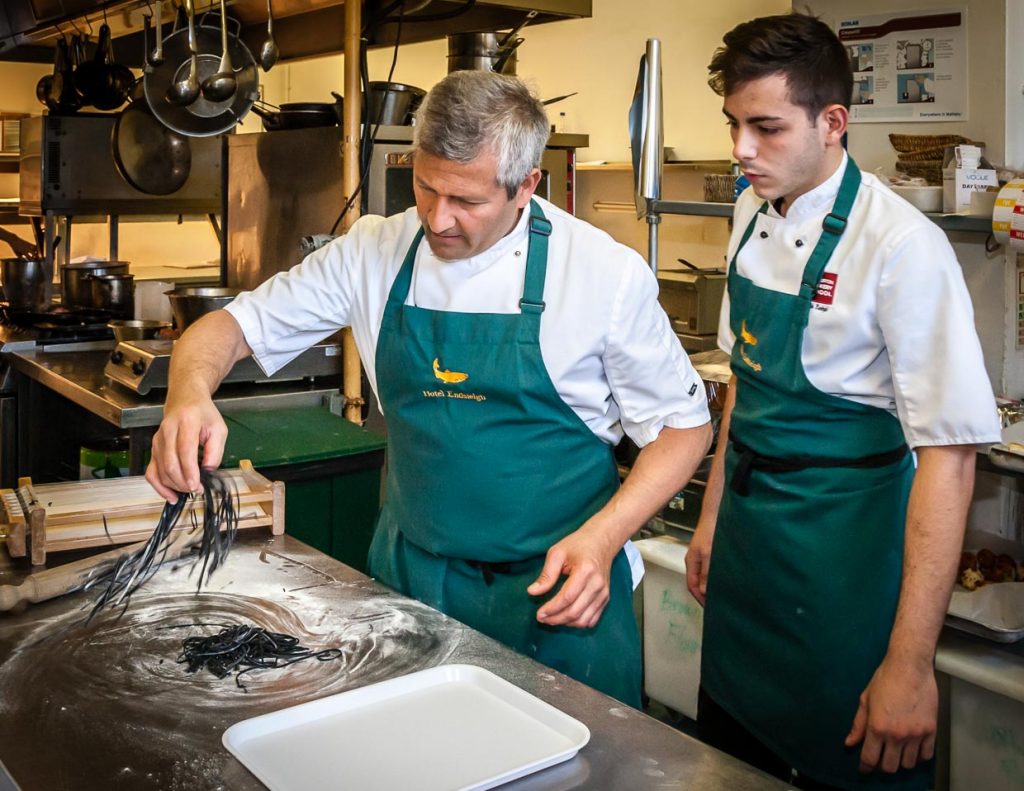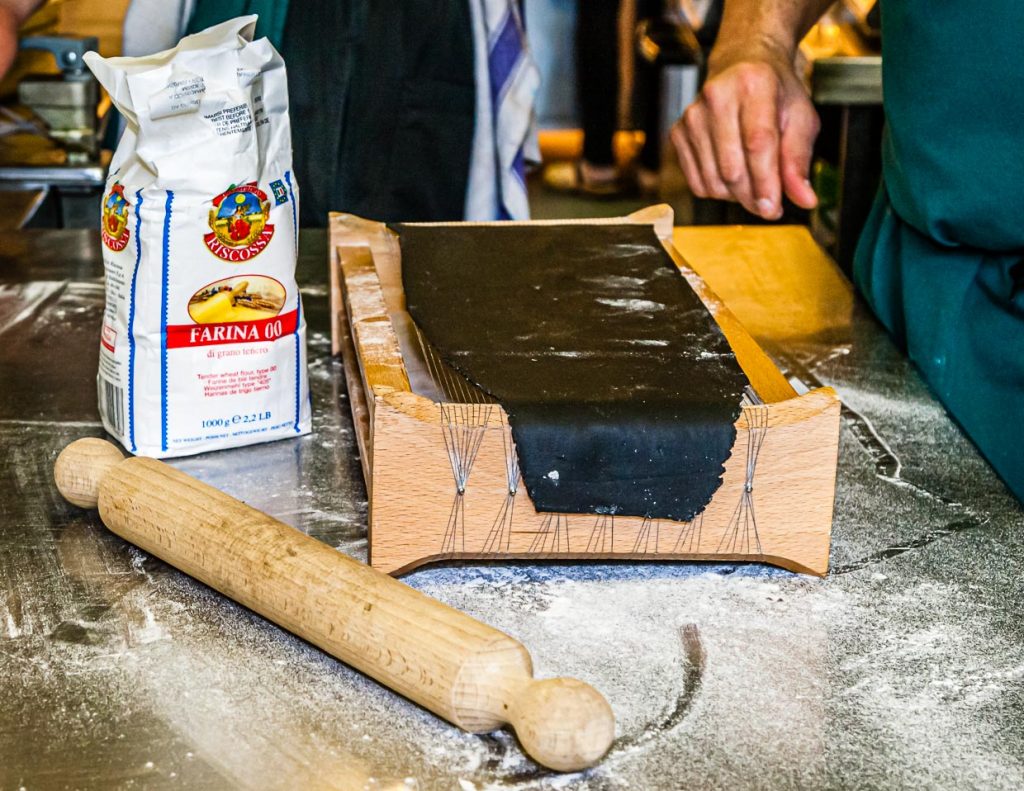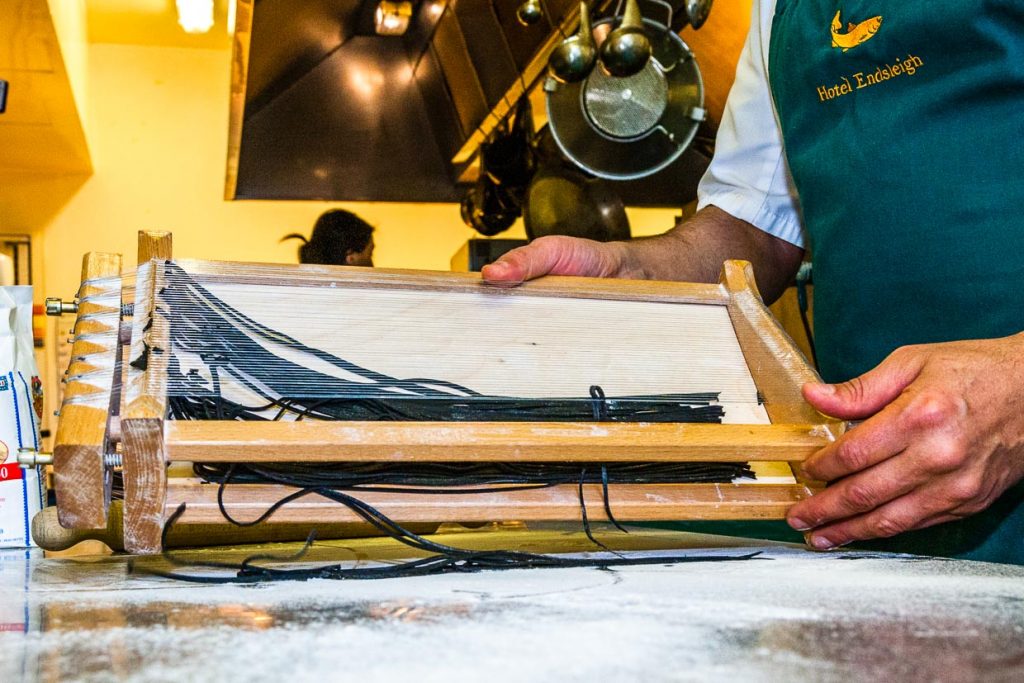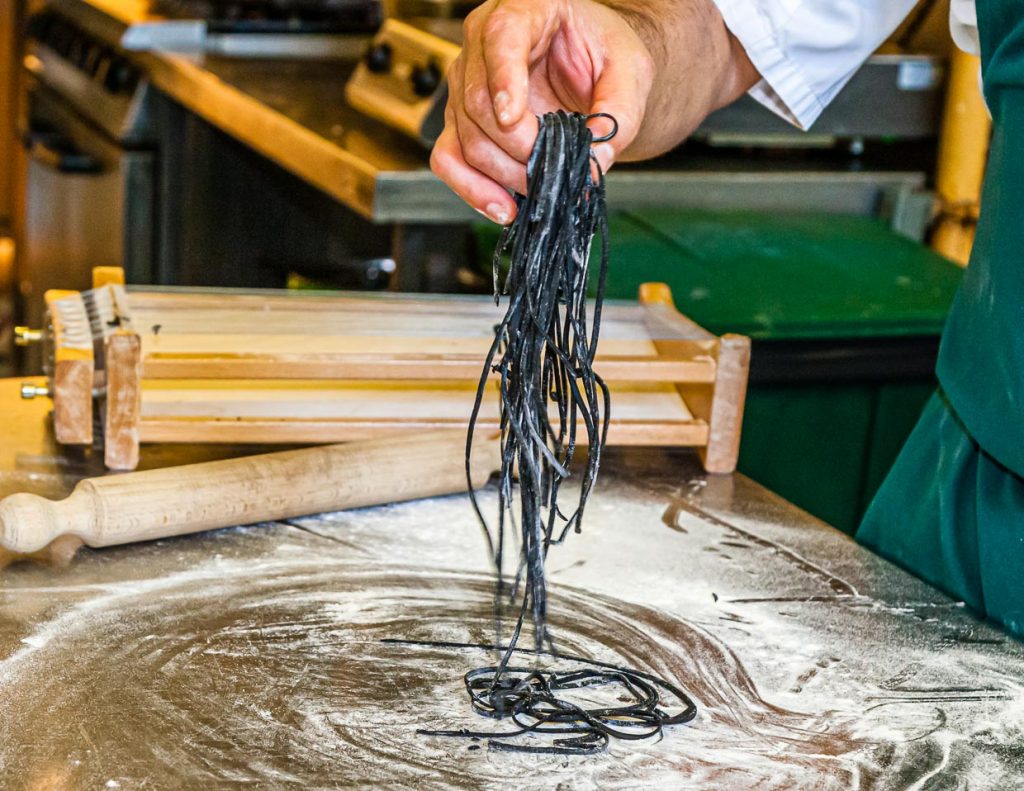Jose Graziosi has been head chef in the kitchen at Hotel Endsleigh since 2015. His name sounds Spanish – but it also sounds Italian. And that’s exactly what it is. His mother is Spanish, his father Italian. Raised in Italy. You can’t get more Mediterranean than that. He met his wife, an Englishwoman, in Rome and went to Great Britain for love. Before Graziosi comes to Endsleigh, he works, among other things, six years for the English star chef Rick Stein in Padstow, Cornwall. Fish and seafood are the focus there. The coast is not far away in Endsleigh either. In addition, there are excellent salmon and trout from the Tamar River, which flows through the valley and is not only Endsleigh’s property boundary, but also forms the border between the counties of Devon and Cornwall.

José Graziosi describes himself as a Nature Boy. He loves to walk through Endsleigh’s extensive grounds before starting work. His dog is always with him then. In autumn he collects mushrooms, on weekends he fishes in the Tamar and every day, even if there is less time, herbs such as wild garlic, bitter cress or wild sorrel are collected.
Click here for the report about Endsleigh’s garden

On our visit, the Endsleigh Garden is covered in a carpet of wild garlic blossoms. In between is wild sorrel. The range of herbs growing right on the doorstep is so large that the house’s kitchen also produces for stock, making wild garlic oil and wild garlic pesto, for example.

Cooking in the monastery and the ancestral mother of the pasta machine
José Graziosi enjoyed his education at the Santa Maria convent in Abruzzo, Italy. When José talks about this time, one has to imagine the training as a convent school for young cooks. Strict regiment, women and men separated, no other earthly distractions. Pure concentration on the culinary arts. From this time José also has a kitchen instrument that has accompanied him on all his career stages in Italy and later abroad. He shows me the carraturo. It looks like a very simple harp, but it is the ancestral mother of the pasta machine. Invented around 1800!

The sound of the Carraturo
Before we take our seats in the evening in the historic dining room of Hotel Endsleigh, José shows us how the Carraturo works. He spontaneously adds sepia noodles to the menu of the day and demonstrates the simple kitchen device. The pasta dough is already prepared and rolled out flat. The work surface and the antique machine are well floured. When the dough has reached the right thickness and width, it is placed on the Carraturo.

Using a rolling pin, José pushes the dough through the wires. They fall onto the slanted wooden surface and slide onto the work surface. The process is repeated until enough tagliatelle are formed. The only maintenance of the carraturo is to occasionally tighten the wires. Like tuning a guitar. José picks up a mound of pasta after the demonstration and says mischievously, “Maccaroni à la guitarra.”
José Graziosi on Maccaroni à la Guitarra.
The individual steps of pasta production with the Carraturo. First, the dough is turned several times through a pasta machine until it is quite thin. Then, the thin flap of dough can be pressed with a rolling pin through the wires that cut it into thin strips. Then briefly flour and cook in salted water until al dente just before eating. At the chef’s side is Salvatore Piacente, also a graduate of the Santa Maria cooking school, where José Graziosi already learned his trade / © Photos: Georg Berg
Dinner at Endsleigh
When it gets dark, countless candles and tea lights glow in the foyer and lounges of Endsleigh. The restaurant is housed in the Duke of Bedford’s former dining room. The walls still bear the original paneling with the coats of arms of his many friends and relatives.

Right at the beginning there is a reunion with the sepia noodles, whose production process we were allowed to follow. The pasta is combined with crab meat and wild sorrel from the garden. They have an intense, yet pleasant spiciness that is achieved through the homemade chili oil.

The second course also sees a reunion with ingredients from Endsleigh’s garden. Cornish cod with saffron potatoes and a basted bouillabaisse is accompanied by spinach and garden wild garlic.

A little porkiness awaits in the main course. Pork tenderloin with pork belly and a pork sweet. Accompanied by bite-sized fennel and strips of pointed cabbage.

The sweet finale is the peanut parfait created by sous chef Tom Ewing with a very chocolatey muffin. To top it off, chocolate sprinkles and roasted peanuts spread across the plate. The different textures make the Peanut Parfait a successful finish.

The Devonshire Cream Tea
A must eat is the famous Devonshire Cream Tea – the extravagant big brother of the Five o’Clock Tea. To ensure that dinner is still possible after enjoying it, Afternoon Tea at Endsleigh starts as early as 3:30 pm. It is served in the library, in the middle of which is a large round wooden table that gradually fills with delicacies.

The cake selection alone is almost unmanageable. There’s carrot cake with cinnamon and mascarpone icing. Orange and almond cake. The classic Victoria Sponge is a sponge cake with cream and cherries that dates back to Queen Victoria. Chocolate brownies with cranberries and pecan nuts. Lemon mousse and pistachio cake. There’s something missing from the list, connoisseurs will now claim – and right: the all-important ingredient is fruit scones, sweet rolls with clotted cream, a very fatty cream and strawberry jam.

Cream tea, literally cream tea, takes its name from the clotted cream traditionally served with scones and strawberry jam. Devon and Cornwall are the two centers of dairy farming in England and therefore producers of the dairy specialty Clotted Cream. The small but subtle difference between a Devonshire cream tea and a Cornish cream tea depends on the order in which the ingredients are served. In Devon first the clotted cream and then the jam. In Cornwall it is the other way around!

All cheddar or what?
In the United Kingdom, the range of local culinary products has developed very positively in recent years. There are more and more producers of local or regional specialties. On the menu at Hotel Endsleigh, we discover a spicy surprise. A platter with cheeses from Cornwall and Devon. We are curious and ask in the kitchen. Sous chef Tom Ewing enthusiastically tells us about Garry Jungheim, who became a cheese affineur with his wife Elise out of a passion for good cheese. The couple founded Country Cheeses, which now has three stores in the region. Garry and Elise track down small cheese manufactories in the country, buy the fresh cheese loaves and refine them in their own aging cellar.

Romantic cheese candlelight in the suite
Before we take a look at the aging process of the diverse cheeses, we first sample the cheese selection Tom Ewing has chosen for Hotel Endsleigh. All cheddar or what? No way. England has caught up in culinary terms. Celtic Gold is a cow’s milk cheese washed with cider. Devon goat cheese is aromatic and salty. Westcombe cheddar lives up to the not-too-high expectations one has of a cheddar. For this is the Cornish Blue, a wonderful blue cheese. Slightly metallic, but not too harsh in taste. The top seller is the creamy Sharpen Elmhirst – soft, delicate and mild – a poem. The wine pairing is also regional with a 2014 Shapham Dart Valley. The cheese is further contrasted by a homemade and excellent apple-brandy chutney, quince bread and organic crackers.
Cheese philosopher Garry Jungheim

The Jungheims have now been dedicated to refining cheese for more than 28 years. They know each of their cheese producers personally. Most of them they discovered themselves. In the early days, they had to travel across the villages to do so. Today, they are established as passionate and successful affineurs, and producers introduce themselves to Country Cheeses in hopes of being included in the cheese assortment. Garry and Elise then also visit the producers on site. They check how the animals are kept and see for themselves the conditions for good cheese quality.

Some like it hot!
Cheese breathes, explains Garry Jungheim while we are standing in his cellar, or rather the ripening cave. The difference in taste is ultimately caused by the strain of bacteria found in the cheese. Without bacteria, nothing works. Another factor in the ripening process is the temperature. For example, 33 degrees Celsius is good for Cheddar. The colder the cheese matures, the more likely it is to acquire a crumbly consistency. So soft cheeses need higher temperatures.
Bacteria die in the cheese. The more of them die, the softer and creamier a cheese becomes. Some secrete a lot of gas, which then makes the famous holes in the cheese. But the cheese affineur can also control the gas production. If the cheese is kept cold at the beginning, few gases develop. If the cheese then comes into a room above 25 degrees Celsius, the gas production is stimulated.

You have to love cheese for this job, Garry says. Cheese is alive and must be treated with respect. The cheese wheels are rubbed down daily. Because moisture concentrates in the mold. It’s amazing how so many types of cheese can be produced from just a few basic ingredients. Garry takes an almost philosophical view and says:
We should embrace the difference, instead of expecting the same
Garry Jungheim

After visiting the cheese cave at Country Cheeses, we continue our journey and head to Cornwall to the seaside town of St. Mawes. There is the second hotel of Olga Polizzi.
Click here to read the report about the Hotel Tresanton
Afterwards we continued our journey by sea with the car ferry to BretangneHere you can read the report about the passage with Brittany Ferries
The cost of half board was not charged by the hotel

